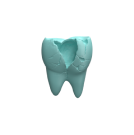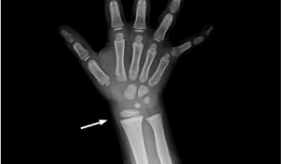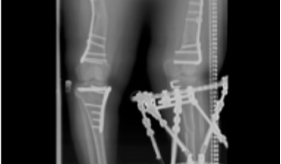Diagnosing XLH
Learn more about how to accurately diagnose XLH through testing.
The signs and symptoms your patients are suffering from may be connected.1,2
Every patient with XLH is different. A patient does not need to show all of the following symptoms to have XLH.








Because some symptoms of XLH may not be visible like chronic pain or fatigue, it is important to listen to your patients. Getting an accurate diagnosis can help you manage the full range of symptoms they may be experiencing.



Learn more about how to accurately diagnose XLH through testing.

Manage XLH early to prevent progressive bone damage.
Watch videos to get more information about how XLH affects the body.
Set up time with a representative to talk more about XLH, or sign up for news and information about XLH.
References:
1. Linglart A, Biosse-Duplan M, Briot K, et al. Therapeutic management of hypophosphatemic rickets from infancy to adulthood. Endocr Connect. 2014;3(1):R13-R30. doi:10.1530/EC-13-0103 2. Ruppe MD. X-linked hypophosphatemia. In: Adam MP, Everman DB, Mirzaa GM, et al., eds. GeneReviews®. Seattle (WA): University of Washington, Seattle; February 9, 2012. Updated April 13, 2017. https://www.ncbi.nlm.nih.gov/books/NBK83985/ 3. Carpenter TO, Imel EA, Holm IA, Jan de Beur SM, Insogna KL. A clinician's guide to X-linked hypophosphatemia. J Bone Miner Res. 2011;26(7):1381-1388. doi:10.1002/jbmr.340 4. Hamilton AA, Faitos S, Jones G, Kinsley A, Gupta RN, Lewiecki EM. Whole body, whole life, whole family: patients' perspectives on X-linked hypophosphatemia. J Endocr Soc. 2022;6(8):bvac086. doi:10.1210/jendso/bvac086 5. Carpenter TO. Primary disorders of phosphate metabolism. Endotext. Accessed February 3, 2023. https://www.ncbi.nlm.nih.gov/books/NBK279172/ 6. Linglart A, Dvorak-Ewell M, Marshall A, San Martin J, Skrinar A. Impaired mobility and pain significantly impact the quality of life of children with X-linked hypophosphatemia. Bone Abstracts. 2015;4(P198). doi:10.1530/boneabs.4.P198 7. Skrinar A, Dvorak-Ewell M, Evins A, et al. The lifelong impact of X-linked hypophosphatemia: results from a burden of disease survey. J Endocr Soc. 2019;3(7):1321-1334. doi:10.1210/js.2018-00365 8. Trombetti A, Al-Daghri N, Brandi ML, et al. Interdisciplinary management of FGF23-related phosphate wasting syndromes: a Consensus Statement on the evaluation, diagnosis and care of patients with X-linked hypophosphataemia. Nat Rev Endocrinol. 2022;18(6):366-384. doi:10.1038/s41574-022-00662-x 9. Haffner D, Emma F, Eastwood DM, et al. Clinical practice recommendations for the diagnosis and management of X-linked hypophosphataemia. Nat Rev Nephrol. 2019;15(7):435-455. doi:10.1038/s41581-019-0152-5